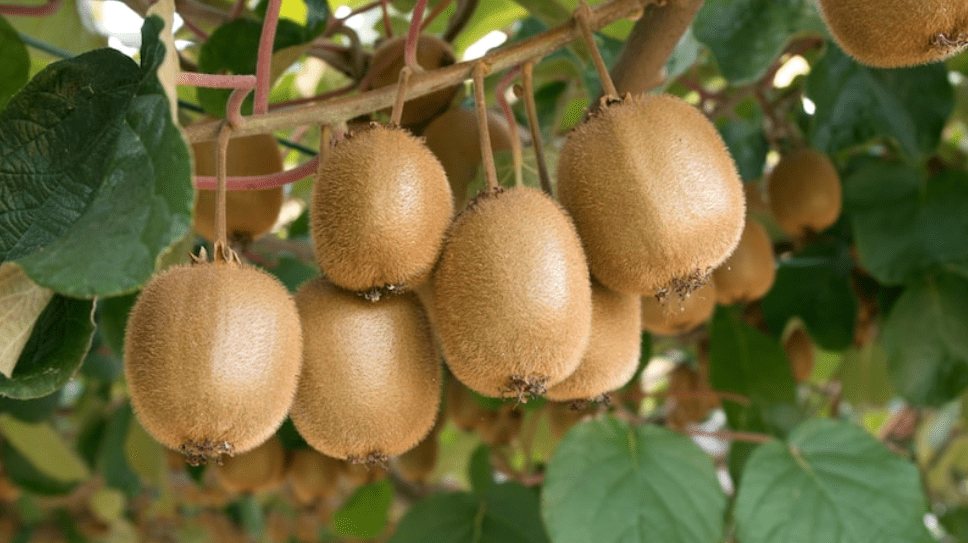
The Fascinating Way Kiwi Fruits Grow on Trees
Have you ever wondered how those delicious kiwi fruits end up on your plate? It’s a fascinating process that involves intricate pollination, growth, and harvesting techniques. In this article, we’ll take a deep dive into the unique way kiwi fruits grow on trees, giving you a comprehensive understanding of their lifecycle. Get ready to be amazed by the fascinating world of kiwi fruit cultivation!
Table of Contents
ToggleOverview of Kiwi Fruit
A. Botanical Classification
Kiwi fruits are part of the Actinidia genus and are classified as a berry. They are native to China, where they were initially cultivated, and are now grown in various regions around the world, including New Zealand, Italy, and the United States.
B. Types of Kiwi Fruits
There are two main types of kiwi fruits: the fuzzy kiwi (Actinidia deliciosa) and the golden kiwi (Actinidia chinensis). The fuzzy kiwi has a brown, fuzzy skin and vibrant green flesh, while the golden kiwi has a smooth, golden-brown skin and a sweeter, more tropical flavor. Both types are delicious and nutritious, packed with vitamins, antioxidants, and fiber.
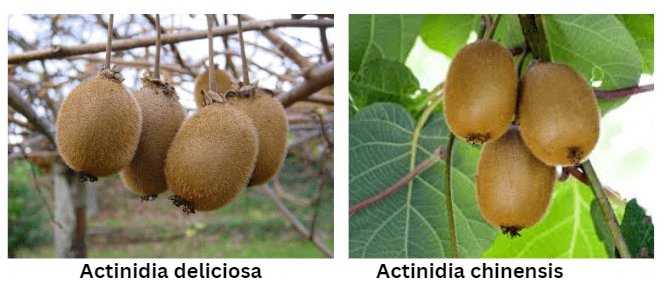
C. Nutritional and Health Benefits
Kiwi fruits are not only delicious, but they also offer a plethora of health benefits. They are loaded with vitamins C, K, and E, as well as dietary fiber, making them a nutritious addition to any diet. The antioxidants found in kiwi fruits can help support the immune system and protect against free radical damage, while the fiber content promotes digestive health. Furthermore, the high levels of vitamin C can aid in collagen production, skin health, and overall immune function. With such impressive nutritional and health benefits, it’s clear that kiwi fruits are an excellent choice for anyone looking to maintain a balanced and healthy lifestyle. So why not incorporate these nutrient-packed fruits into your diet today? With their delicious taste and numerous health benefits, kiwi fruits are a must-have for anyone looking to prioritize their well-being.
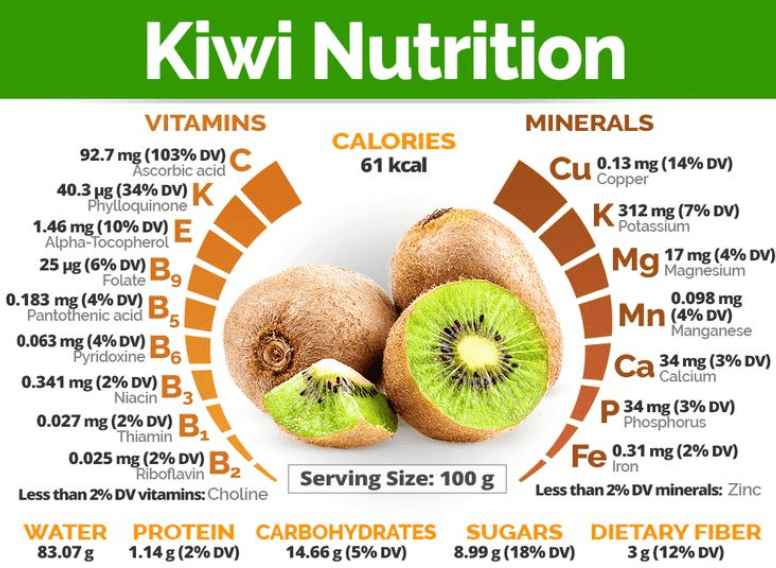
The Growth Habit of Kiwi Plants
A. Vining Nature of Kiwi Plants
The vining nature of kiwi plants makes them an excellent addition to any garden or landscape. Their ability to climb and cover arbors, trellises, and other structures can add a beautiful and natural element to any outdoor space. Not only are kiwi plants visually appealing, but they also provide a bountiful harvest of delicious and nutritious fruits. With proper care and maintenance, kiwi plants can thrive and produce an abundance of fruit for years to come. So, if you’re looking to enhance the beauty of your garden while reaping the benefits of a fruitful harvest, consider adding kiwi plants to your landscape. Their vining nature is sure to make a stunning addition to any outdoor space.
B. Support Structures
When it comes to growing kiwi plants, support structures are absolutely essential. The vining nature of kiwi plants means that they need something to climb and grow on in order to reach their full potential. Without proper support, the vines can become tangled and overcrowded, leading to poor fruit production and an overall unhealthy plant. By investing in sturdy support structures such as trellises or arbors, you can ensure that your kiwi plants have the opportunity to thrive and produce an abundant harvest. Additionally, having support structures in place makes it easier to care for and maintain your kiwi plants, as it provides a designated space for the vines to grow and flourish. So, if you want to enjoy a successful and fruitful kiwi harvest, be sure to prioritize the use of support structures in your garden or landscape. Your kiwi plants will thank you for it!
Lifecycle of a Kiwi Vine
A. Planting and Establishment
1. Choosing the right variety
Selecting the right variety of kiwi plant is crucial for successful growth and fruit production. Consider factors such as climate, soil type, and available space when choosing a variety. By doing so, you can ensure that your kiwi plants have the best chance of thriving in your specific conditions and yielding a bountiful harvest.
2. Soil preparation and planting techniques
It is absolutely crucial to properly prepare the soil and use the right planting techniques when establishing kiwi vines. Conducting a soil test to assess pH and nutrient levels, and making any necessary amendments, will create optimal growing conditions for the plants. Additionally, proper spacing and positioning of support structures are essential for the long-term health and productivity of the kiwi vines. By taking these measures, you can set your kiwi plants up for success and ensure a bountiful harvest in the future. Don’t underestimate the importance of soil preparation and planting techniques for the growth stages of your kiwi vines.
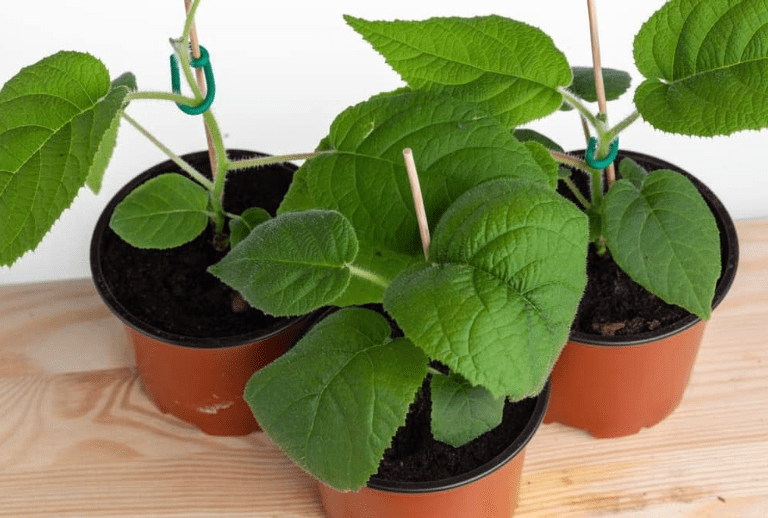
B. Growth Stages
1. Seedling to mature vine
As your kiwi vines progress from seedling to mature vine, it is crucial to provide them with the proper care and support. This includes regular pruning, training the vines on their support structures, and providing adequate water and nutrients. Taking the time to properly care for your kiwi vines during each growth stage will ensure that they reach their full potential and produce an abundance of delicious fruit. Don’t neglect the crucial role of proper care and support at each growth stage of your kiwi vines. Your future harvest depends on it.
2. Seasonal growth patterns
Understanding the seasonal growth patterns of your kiwi vines is essential for maximizing their productivity. By paying attention to the specific needs of your vines during each season, you can ensure that they receive the proper care and resources to thrive. Whether it’s pruning in the winter, providing ample water and nutrients in the spring, or protecting them from extreme heat in the summer, each season presents unique challenges and opportunities for your kiwi vines. By staying attuned to their seasonal growth patterns, you can set your vines up for success and enjoy a bountiful harvest. Don’t underestimate the importance of being in tune with the seasonal needs of your kiwi vines – it will pay off in the long run.
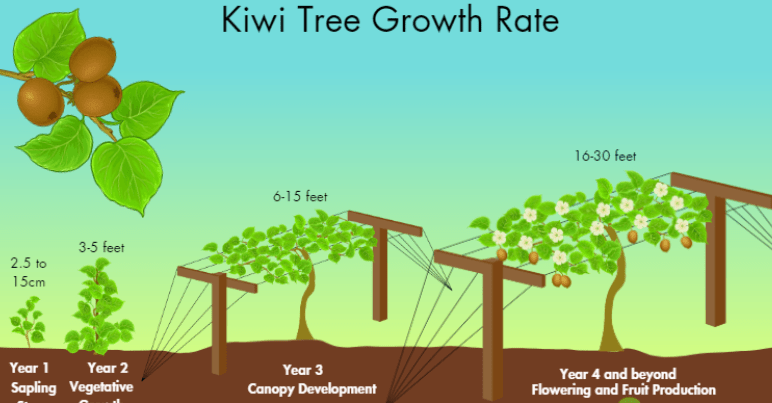
C. Flowering and Pollination
1. Male and female flowers
The flowering and pollination process of kiwi vines is absolutely crucial for a successful harvest. Without proper fertilization, you won’t get any fruit. Understanding the difference between male and female flowers and how they work together is key to ensuring a robust pollination process. This means knowing when and how to encourage pollinators, such as bees, to visit the flowers and transfer pollen from the male to the female. By taking an active role in this process, you can significantly increase your chances of a successful harvest. Don’t leave it to chance – be proactive and informed about the flowering and pollination needs of your kiwi vines. Your efforts will pay off with a plentiful crop.
2. Role of pollinators (e.g., bees)
Pollinators, such as bees, play a crucial role in the pollination process of kiwi vines. Without their assistance, the transfer of pollen from male to female flowers would not occur, resulting in a lack of fruit production. By attracting and encouraging pollinators to visit the flowers, you can significantly increase the chances of successful pollination and a bountiful harvest. Bees are essential partners in the cultivation of kiwi vines, and it’s important to create an environment that supports their presence. By understanding and valuing the role of pollinators, you can ensure the successful reproduction of your kiwi plants and enjoy the fruits of your labor. Let’s work together to create a welcoming habitat for our pollinator friends and reap the rewards of a thriving kiwi harvest.
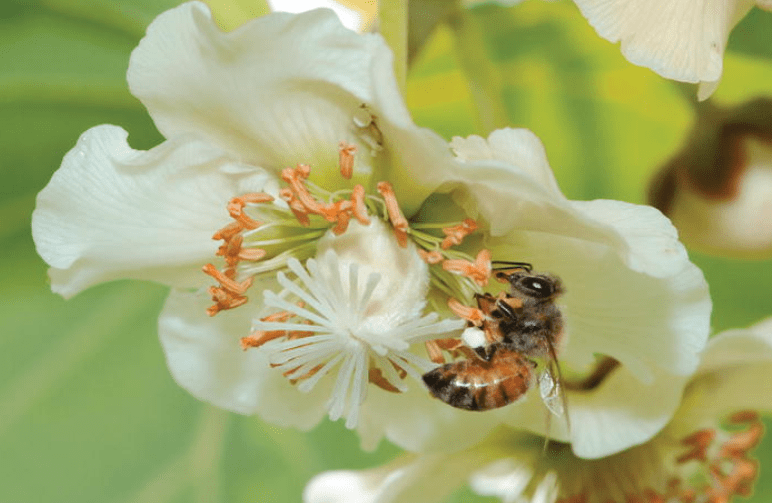
3. Importance of proper pollination for fruit set
Proper pollination is absolutely essential for fruit set in kiwi vines. Without successful pollination, the flowers will not develop into fruit, ultimately leading to a poor harvest. By understanding the importance of proper pollination, you can take proactive steps to ensure the successful reproduction of your kiwi plants. This may include attracting pollinators, such as bees, to your garden, and providing a supportive environment for their activity. By recognizing the significance of proper pollination, you can increase the chances of a plentiful crop and enjoy the rewards of your hard work. Let’s prioritize the pollination process to ensure a successful fruit set and a bountiful harvest of delicious kiwis.
Environmental Requirements for Kiwi Growth
A. Climate and Temperature
The climate and temperature are crucial factors in the successful growth of kiwi vines. Kiwi plants thrive in a temperate climate with a long growing season and mild winters. They require a minimum of 200 frost-free days to reach maturity and produce fruit. Additionally, kiwi plants are sensitive to extreme temperatures and can be damaged by frost or heat stress. By understanding the environmental requirements for kiwi growth, you can create the optimal conditions for your vines to flourish. Let’s prioritize the climate and temperature needs of kiwi plants to ensure a successful and abundant harvest.
B. Soil and Nutrient Needs
The soil and nutrient needs of kiwi plants are essential for their healthy growth and fruit production. Kiwi vines require well-drained, fertile soil with a slightly acidic pH level. They also benefit from regular fertilization and the addition of organic matter to the soil. Providing the right balance of nutrients, such as nitrogen, potassium, and phosphorus, will support the overall health and vigor of the vines. By paying attention to the soil and nutrient needs of kiwi plants, you can ensure that they have the resources they need to thrive and produce high-quality fruit. Let’s prioritize the soil and nutrient requirements of kiwi plants to set them up for success.
C. Watering and Irrigation
Watering and Irrigation are crucial factors in the successful growth and development of kiwi plants. It is important to provide consistent and adequate water to kiwi vines, especially during the growing season and fruit production. Proper irrigation methods, such as drip irrigation or soaker hoses, can help ensure that the roots receive water directly and efficiently. It is important to monitor the moisture levels in the soil and adjust the watering schedule as needed to prevent overwatering or underwatering.
In addition, it is important to consider the water needs of kiwi plants based on their growth stage and environmental conditions. Young kiwi plants may require more frequent watering to establish their root systems, while mature vines may need more water during hot and dry periods. By providing the right amount of water and implementing efficient irrigation practices, you can help kiwi plants thrive and produce high-quality fruit.
In conclusion, paying attention to the soil and nutrient needs, as well as implementing proper watering and irrigation practices, is essential for the successful growth and fruit production of kiwi plants. By prioritizing these factors, you can set the stage for healthy and productive kiwi vines.
Care and Maintenance of Kiwi Vines
A. Pruning Techniques
Pruning is an essential part of caring for kiwi vines, and by using the right techniques, you can promote healthy growth and fruit production. It is important to regularly prune your kiwi plants to remove dead or diseased wood, improve air circulation, and encourage the growth of new fruiting wood. Additionally, proper pruning can help control the size and shape of your kiwi vines, making it easier to manage and harvest the fruit.
By learning and utilizing the correct pruning techniques for kiwi vines, you can ensure that your plants are able to reach their full potential and produce bountiful, high-quality fruit. Don’t overlook the importance of pruning in the care and maintenance of kiwi vines – it is an essential practice for their long-term health and productivity.

B. Pest and Disease Management
1. Common pests and diseases affecting kiwi vines
Common pests and diseases affecting kiwi vines include aphids, mites, powdery mildew, and bacterial canker. By implementing proper pest and disease management techniques, you can protect your kiwi vines from these damaging threats and ensure a healthy and thriving crop. Integrated pest management methods, such as regular monitoring, using natural predators, and practicing good sanitation, can effectively control pest infestations without the need for harmful chemical pesticides. Additionally, implementing proper cultural practices, such as providing adequate air circulation and avoiding overwatering, can help prevent the onset of common diseases like powdery mildew and bacterial canker. By taking a proactive approach to pest and disease management, you can safeguard your kiwi vines and maximize their potential for producing high-quality fruit. Don’t let pests and diseases hinder the success of your kiwi crop – by implementing effective management strategies, you can ensure a bountiful harvest and healthy plants.
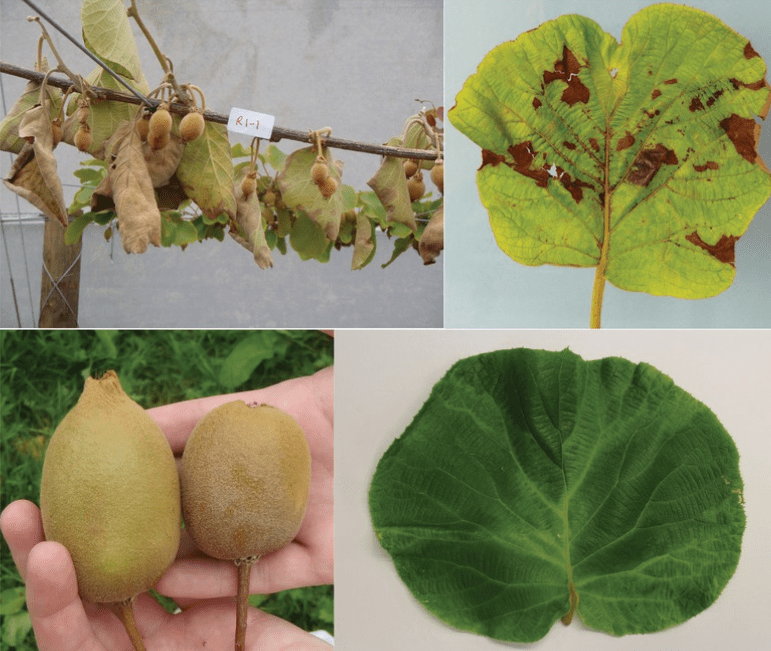
2. Organic and chemical control methods
When it comes to pest and disease management for your kiwi vines, it’s important to consider both organic and chemical control methods. While chemical control methods may seem like a quick and easy solution, they can have harmful effects on the environment and non-target organisms. On the other hand, organic control methods, such as using natural predators and practicing good cultural practices, are not only safer for the environment but also promote the overall health of your vines. By prioritizing organic control methods, you can protect the natural ecosystem and maintain the integrity of your crop. Additionally, organic control methods can be just as effective as chemical ones, with the added benefit of promoting sustainable and eco-friendly agricultural practices. So, when it comes to pest and disease management for your kiwi vines, consider the long-term impact and choose organic control methods to ensure a healthy and thriving crop for years to come.
C. Nutrient Management
Nutrient Management is a key factor in maintaining the health and productivity of your kiwi vines. By implementing organic nutrient management practices, such as composting, cover cropping, and using organic fertilizers, you can ensure that your vines receive the essential nutrients they need without the harmful effects of synthetic chemicals. Organic nutrient management not only promotes the overall health of your vines but also supports the natural ecosystem and reduces the risk of soil and water contamination. By choosing organic nutrient management, you can contribute to sustainable and environmentally friendly agricultural practices while producing high-quality kiwi fruits. So, prioritize organic nutrient management for your kiwi vines to ensure their long-term health and productivity.
Harvesting Kiwi Fruits
A. Determining Ripeness
Determining the ripeness of your kiwi fruits is crucial to ensure that you harvest them at the perfect time for optimal flavor and quality. By using a combination of visual and tactile indicators, such as color, firmness, and fragrance, you can accurately determine when your kiwi fruits are ready to be harvested. Waiting until the fruits are fully ripe will result in a sweeter and more flavorful yield, leading to greater satisfaction for both you and your consumers. So, take the time to carefully assess the ripeness of your kiwi fruits before harvesting to ensure a bountiful and delicious yield.
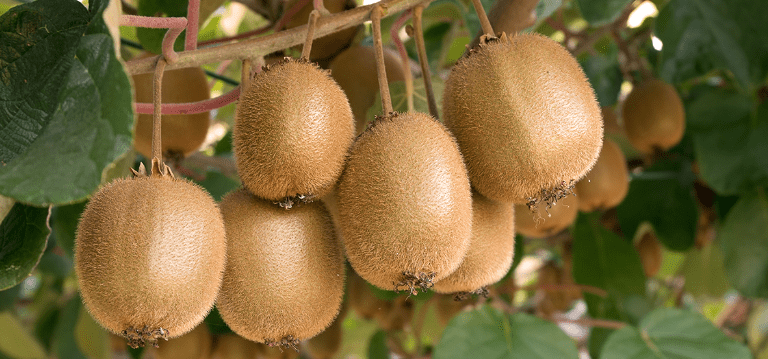
B. Post-Harvest Handling
Post-harvest handling is a critical step in ensuring the quality and shelf-life of your kiwi fruits. Proper handling techniques, such as gentle handling to avoid bruising, prompt cooling to slow down the ripening process, and careful packaging to prevent damage, will help preserve the fruits’ flavor, texture, and appearance. By prioritizing post-harvest handling, you can ensure that your kiwi fruits maintain their peak quality from the moment they are harvested to when they reach the consumer. This attention to detail will not only result in a better product but also lead to higher satisfaction and loyalty from your customers. So, make post-harvest handling a priority to maximize the potential of your kiwi fruits.
Uses and Benefits of Kiwi Fruits
A. Culinary Uses
Popular recipes and dishes featuring kiwi fruits include salads, smoothies, desserts, and fruit tarts. The sweet and tangy flavor of kiwi fruits adds a refreshing and vibrant touch to any dish, making them a versatile and delicious ingredient in the kitchen.
B. Skin and Hair Care
The vitamin C and E content in kiwi fruits make them a fantastic natural remedy for promoting healthy skin and hair. Whether applied topically as a face mask or consumed regularly as part of a balanced diet, kiwi fruits can help improve skin elasticity, reduce wrinkles, and promote shiny, lustrous hair.
D. Digestive Health
With their high fiber content, kiwi fruits can aid in digestion and alleviate constipation. The natural enzymes found in kiwi fruits also help break down proteins, making them easier to digest. Adding kiwi fruits to your diet can contribute to a healthier digestive system and improved overall gut health.
In conclusion, the growth and development of kiwi fruits on trees is truly a fascinating process that is worth learning about. From the intricate pollination process to the careful harvesting of the fruits, there is so much to appreciate about the lifecycle of kiwi trees. By understanding this process, we can gain a deeper appreciation for the delicious fruits that we enjoy. So next time you bite into a juicy kiwi, take a moment to marvel at the incredible journey it took to reach your plate. It’s truly a fascinating and awe-inspiring process.
Frequently Asked Questions (FAQs)
Kiwi fruits grow on vines, not trees. The vines can reach up to 30 feet in length and are trained to grow on trellises for easy harvesting.
Kiwi fruits are typically harvested in the fall, usually in the months of October and November.
Yes, there are several varieties of kiwi fruits, with the most common being the fuzzy kiwi and the golden kiwi. Each variety has its own unique flavor and texture.
It takes about 5-7 years for a kiwi vine to start producing fruit, but once it does, it can continue to produce for up to 30 years.
Kiwi fruits thrive in temperate climates with plenty of sun and well-drained soil. They are typically grown in regions with mild winters and warm summers.
Kiwi vines require regular pruning to ensure proper fruit production and to maintain manageable vine size. They also need a sturdy support system, like a trellis, to grow on.
Kiwi fruits are packed with vitamins, minerals, and antioxidants, making them a great addition to a healthy diet. They are known for their high vitamin C content and their ability to aid in digestion.
Yes, the skin of a kiwi fruit is edible and contains additional fiber and nutrients. However, some people prefer to peel the skin before eating.
